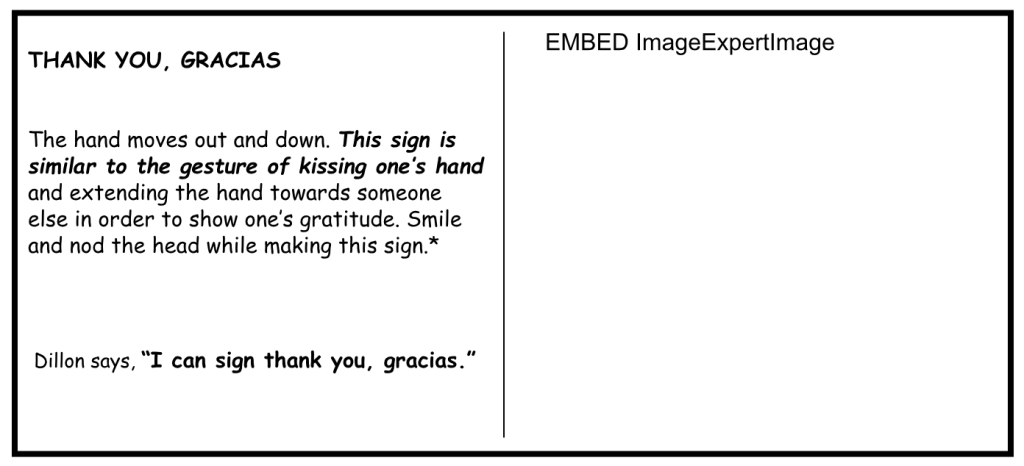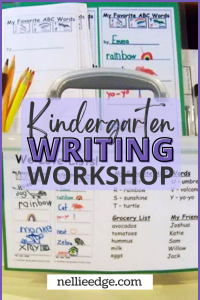Teachers experience challenges every day! This includes everything from the copy machine breaking to the unexpected fire drill. However, one of the biggest challenges involves classroom management. Sadly, teachers lose a lot of valuable instructional time dealing with tough behaviors. So, they have to get creative in developing classroom management systems. Thankfully, learning and teaching sign language for classroom management will help transform the learning environment!
Classroom Management ASL Signs
| “If teachers do nothing else, they’ve got to use sign language for class management!” See ASL Browser http://commtechlab.msu.edu/sites/aslweb/browser.htm | |||||
| No The pointer finger and middle finger shape close on the thumb. This is similar to the fingerspelling of n-o. | Please (por favor)The open hand circles over the heart to indicate pleasure. | Thank you (gracias)The hand moves out and down. This sign is similar to the gesture of kissing one’s hand and extending it toward someone else to show gratitude. | |||
| Walk (camina)Hold both flat hands in front with palms down. Then, imitate walking by moving each hand forward alternately. | Don’t (no corra)The hands are crossed and then move outward forcefully. This indicates that something should stop. | Run (correr)Point both “L” hands forward and hook the right index finger of the dominant hand around the left thumb. Then, wiggle thumbs and index fingers as both hands move forward quickly. | |||
| Stop (para)The edge of one hand comes down on the palm to represent something coming to a quick stop.And think: Index finger touches forehead. | Toilet / Restroom (baño)The “T” handshape is shaken. If that sign is offensive in your community, use an “R” handshape. | Quiet (silencio) – 2-part signTouch the lips with the right index finger. Move both flat hands down and to the sides, palm facing down. This gesture tells others to be silent (quiet). | |||
| Applause (aplauso)Hands moving excitedly to the side of the forehead is the quietest sign for applause. | Careful (con cuidado)Make the sign for “KEEP” (“K” hands) and strike together two times at the wrist. | Focus (pay attention) (atención)Two “B” hands at each side of the forehead move forward together. | |||
| Stand (up) (ponte de pie) The “V” handshape represents a person. The location of the “V” handshape shows someone standing on a surface. | Sit (down) (sentarse) The upper “U” handshape represents the legs of a person, while the other “U” handshape represents a chair. The motion shows a person sitting down. Sit right. Point both index fingers forward. Then, bring right hand down onto the left thumb. | Children (niños)With palms facing down, one hand “pats” the head of more than one child. | |||
| Teacher (professor) (2-part sign) The flattened “O” hands move out from the forehead to show that a person is taking what she knows and is passing it on to others. Closed “5” hands move down the sides of the body for “person.” | Work (trabajar)With the palms facing down, tap the wrist of the right “S” hand on the wrist of the left “S” hand in a hammering motion.Good: The hand moves forth from the mouth to the palm of the other hand. | Line up (línea por favor)The “4” hands are often used to represent a line of people. The two “4” hands are pulled apart, and fingers spread to show a line of people. | |||
Teaching is tough! However, it is so rewarding! By learning and teaching sign language for classroom management, students will feel ready to learn. Best of all, providing helpful reminders in ASL will not take away valuable instructional time.
Classroom Management Sign Book
Make a book of classroom management and friendship signs with photos of your children signing.
Children will easily learn frequently used signs. Many children will actually be able to read each word that they can sign. This book then becomes a favorite “I Can Read” book – in three languages!
Consider making a personal ASL phrase book to help you learn.
Keep multiple copies of The Perigee Visual Dictionary in your home and classroom. Enlarge pictures of key signs that you want to learn and bind them into a book. See The Perigee Visual Dictionary, by Rob Butterworth and Micky Flodin.

Save this resource for later!
Make sure to save this blog to your favorite ASL Pinterest board. You will be able to come back to it when you are ready to introduce sign language for classroom management in kindergarten.









